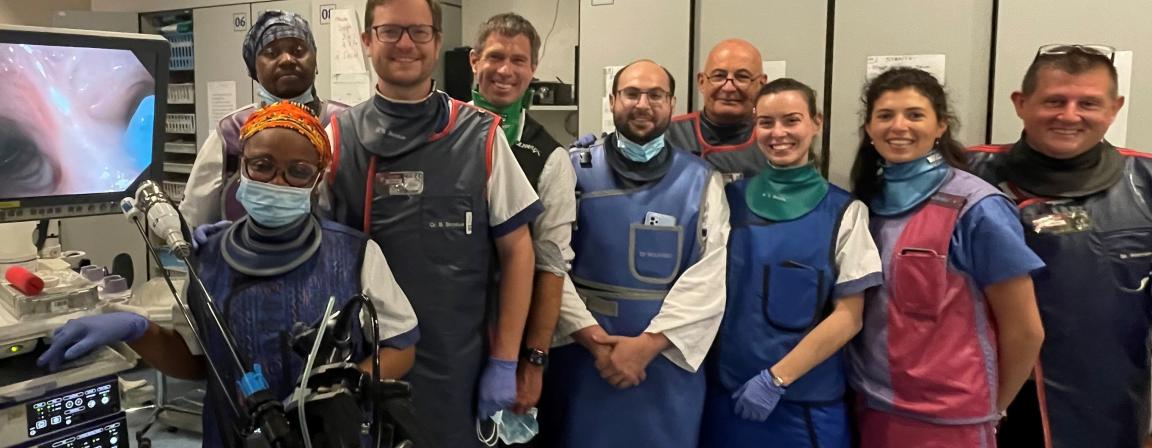LUNG CANCER : First Endoscopic Ablation of the Pulmonary Module in Belgium at the Erasmus Hospital
16 October 2023 – After London and Hong Kong, it is the turn of the Erasmus Hospital to carry out the first endoscopic microwave ablation of a lung cancer in Belgium. Four lesions in three patients have already benefitted from this innovative and non-invasive treatment for lung cancer. New progress combining diagnosis and treatment that is of potential benefit to patients being treated for lung cancer.

Innovative treatment
Professors Benjamin Bondue, pneumologist and clinic director, and Dimitri Leduc, Head of the Medico-Surgical Department of Thoracic Pathology, recently used this innovative technique to treat four cancerous lesions in three patients. This non-invasive method is proposed for patients who are unable to benefit from surgery due to their age, a poor respiratory function or comorbidities. As such, it is an innovative alternative to radiotherapy and interventional radiology. “Compared to radiotherapy, this new method has the advantage that it can be carried out during the same operating time required to take biopsy samples, it can be repeated if necessary, and it is more precisely targeted at the treatment zone. Unlike interventional radiology methods, it makes it possible to pass through natural orifices and to avoid a high risk of pneumothorax,” stresses Professor Bondue. Endoscopic ablation by the microwave method is therefore an additional treatment option when treating inoperable patents. “This effectively completes our arsenal for diagnosing the pulmonary nodule following screening campaigns. The technique of endoscopic navigation is already used routinely at the Erasmus Hospital that has developed major expertise in this field,” concludes Professor Leduc.
Cauterization by endoscopic navigation
The nodule is burned using a catheter introduced through natural orifices by endoscopy. The greater part of the intervention consists of appropriately placing the catheter through the nodule thanks to a precise navigation and use of a kind of scanner (CBCT) during the procedure. Several return visits to check the scanner images are needed to find the right position for the ablation catheter. When the catheter is in place, the ablation begins and takes no more than 10 minutes. The aim is to burn the entire tumour while sparing a maximum of healthy tissue. After the procedure the patient wakes up without a surgical drain or painkillers. He or she remains hospitalised under surveillance for a few days and a verification scan is carried out the day after the intervention. This new treatment represents real progress permitting a combined lung cancer diagnosis and treatment. It is a new tool in our arsenal in combating ling cancer for inoperable patients at the Jules Bordet Institute and the Erasmus Hospital within the Brussels University Hospital.
For information on endoscopic lung nodule removal, please contact our medical secretariat on 02/555.39.43, or by email at secmed [dot] pneumo [dot] erasme [at] hubruxelles [dot] be